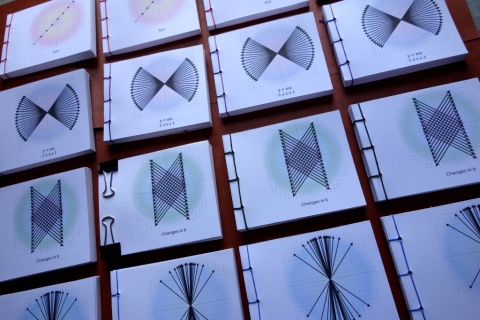The domino shape just doesn't get enough respect. You are likely familiar with the fact that the game of dominoes is played with tiles that are like two squares on top of each other. Much to my delight and surprise, about a year ago, mathematician Justin Lanier enlightened me to the fact that this rectangle, which is twice as… Continue reading Domino: A Shape With Merit
Tag: art in education
Scaling and Transforming for Design with 7 year-olds
I've been reading on-line conversations lately about scaling and dilation (which are two terms for the same thing, I think). Repeatedly I've seeing questions from various people on scaling activities. This confused me at first, not the concept itself, but why did there seem to be such an interest in methods of teaching dilation? Turns out… Continue reading Scaling and Transforming for Design with 7 year-olds
The Animated Equation Book
My Do-It-Yourself Equation of the Line Flip Books are ready to share. I've been writing about these, on and off for months, but my work on them has been steady. My goal has been to create PDF pages that I can distribute on-line which a class of students can assemble in about 10 to 15… Continue reading The Animated Equation Book
The Autobiography of a Second Grader -back to school!
I had planned that this post be about the Paul Johnson show, but I won't be able to get in to photograph it just yet. Instead I've decided to seize the moment and write about this great back-to-school project that Gail DePace did with her 2nd graders a few years ago. Gail and I worked together… Continue reading The Autobiography of a Second Grader -back to school!




